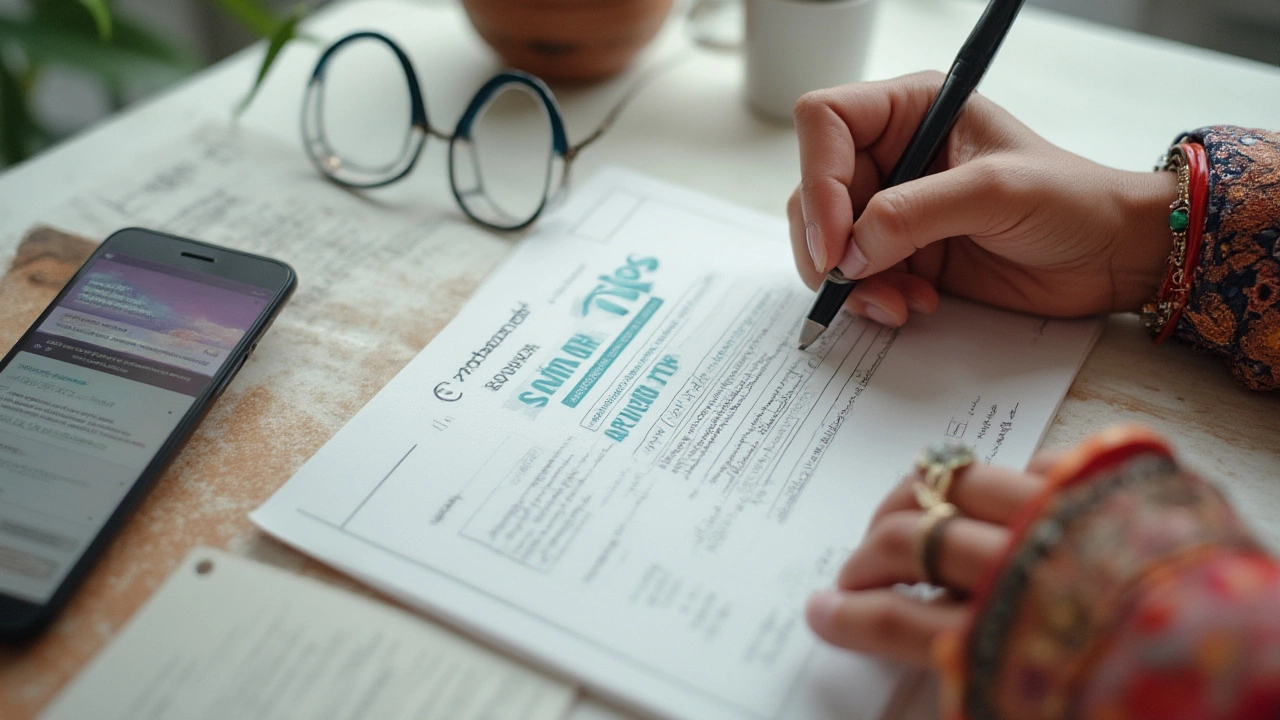You’d think paying only $25 a month for a brand-new weight loss shot like Zepbound was a fantasy, yet diners in Des Moines and nurses on night shift in Houston are snapping it up at that price. What’s the trick? It’s not some sketchy coupon floating around on Telegram. It comes down to knowing how the system works, acting fast, and not falling for misinformation online. And you don’t need celebrity connections or secret back doors; you just need a legit prescription, the official savings program, and a dose of patience. Ready to hack Zepbound pricing like savvy patients do?
Understanding Zepbound: What It Is and Why It’s Making Headlines
Zepbound (tirzepatide) exploded on the scene in late 2023 as the first FDA-approved drug to target both GIP and GLP-1 receptors for chronic weight management. Unlike older meds, it helps adults with obesity—and those with at least one weight-related medical condition—lose a serious amount of weight. Real clinical trials showed people shedding up to 22.5% of their body weight, which explains why Zepbound is always making the news and topping Reddit weight loss forums.
But here’s what most people don’t realize: the sticker price for Zepbound is steep. We’re talking nearly $1,060 for a one-month supply without insurance. Who’s got that kind of cash lying around?
That’s why people hunt for pharmacy hacks. In a 2024 KFF poll, nearly 58% of adults said they searched for cheaper ways to afford their prescription drugs. Zepbound’s official site is packed with info, but finding step-by-step guidance on getting it for cheap (without weird hoops or getting scammed) takes work. That’s the goal here: to break down all the confusing stuff so you get the best deal with zero headaches.
Quick heads-up: Zepbound is prescription-only. No telehealth memes, no shady online “medspas,” no fakes. If it looks too good to be true, it is.
So what does Zepbound do different? It combines GIP and GLP-1 agonism in one weekly injection. The result is not just slow weight loss—the numbers are solid and fast for most people. Here’s a neat chart from the SURMOUNT-1 study:
| Average Weight Loss | Placebo Group | Zepbound 15 mg Group |
|---|---|---|
| At 72 weeks | -3.1% | -22.5% |
| Number meeting >20% fat loss | 1.5% | 55% |
That’s leaps ahead of anything but bariatric surgery. You get why people want in. But paying retail is out of reach for most families paying bills. Is that $25 a month price even real?
Yes, but with a catch: it’s an official offer from Eli Lilly for people with commercial insurance (not Medicare or Medicaid). If you qualify, the copay can drop to as little as $25. And if you don’t, there are still tips you’ll want to know—more on those later.

Step-By-Step: The Exact Process to Pay Only for Zepbound
If you want that low price, you have to get the details right. Here’s the exact playbook people are using for 2025. No shortcuts or shady stuff, just a clear path through the insurance maze.
- Get a Prescription: Only U.S.-licensed doctors, nurse practitioners, or telemedicine clinics with proper credentials can write you a script for Zepbound. Most require an in-person or telehealth consultation. Be clear about your BMI and weight-related conditions (type 2 diabetes, hypertension, high cholesterol, etc.) because those details matter for both insurance approval and your safety.
- Check Your Insurance: Zepbound is only available through commercial (private, employer, or Healthcare.gov) plans for the $25 offer. Medicare, Medicaid, and uninsured folks don’t get this copay card deal yet—thanks to current program rules as of July 2025. Ask your benefits manager if Zepbound is covered under your plan’s "preferred formulary" or "speciality pharmacy" benefit. Most major plans cover it, but some need prior authorization (your doctor fills out extra paperwork proving you meet criteria).
- Access the Official Lilly Savings Program: Go to the real Zepbound Savings Card site (linked directly from the manufacturer’s home page; do not trust third-party offers). Register using your prescription info, date of birth, and insurance. The site generates a virtual card that reduces your out-of-pocket costs to a max of $25 per month—if your insurance covers Zepbound. Print or download the card (you can also add it to your Apple Wallet), then bring it to the pharmacy with your prescription.
- Give the Card to Your Pharmacist: When you fill Zepbound for the first time, show your insurance and savings card. The pharmacy’s computer system deducts the card value from your copay. The pharmacy then bills insurance, applies the discount, and—if all goes well—you pay only $25. Sometimes the first claim takes a few days to process, so don’t panic if there’s a delay.
- What If the System Glitches? If your pharmacy doesn’t know how to run the copay card (some big chains mix it up), show the instructions from the card site or ask to speak to their billing specialist. Local independent pharmacies often get this right faster than big-box chains. Don’t leave with a $1,000 bill without asking what went wrong.
One thing to know—there’s a cap on Lilly’s financial assistance: the card can cover up to $150 per month in value for most plans, and up to $300/month for other cases, and up to a yearly program maximum. For most people with typical insurance, this gets you down to the magic $25 price tag. If your deductible is high or if your plan puts Zepbound on a "non-preferred" tier, your costs may be a bit more (but still far cheaper than cash price).
And don’t ignore the refill instructions. The savings card must be updated or re-registered every year as per Lilly’s terms. If you forget, you could get surprised with a huge bill at the counter.
The key is to get all ducks in a row—prescription, insurance, copay card, and patient info—so the pharmacy doesn’t see any red flags. Keep a printout or screenshot of all instructions and bring every document for your first pickup.
Want a bonus tip? Some patients with flexible spending accounts (FSA) or health savings accounts (HSA) have combined those with the copay card, so their $25 payment comes out of pre-tax dollars. That’s another way to squeeze more value out of the deal. Always double-check with your benefits specialist.

Real-Life Tips, Warnings, and Ways to Save More on Zepbound
Navigating drug pricing in the U.S. can feel like trying to solve a Rubik’s Cube blindfolded. Even when you get the $25 price, the system isn’t always smooth. Here are some hard-earned tips straight from patients, pharmacy techs, and doctors who’ve helped thousands access Zepbound:
- Stay updated on program changes: Eli Lilly reviews (and sometimes tweaks) the Zepbound savings program every few months. What worked last year might not this quarter. Check the official site before each refill, especially if your insurance or job changes.
- Don’t buy fake discount cards: The only real $25 offer comes directly from Lilly’s official program. If someone on social media offers you a "Zepbound copay card" for a fee, run—it’s a scam, and you’ll end up with nothing.
- If you’re uninsured or on government plans: You sadly don’t qualify for the $25 savings card. Some online clinics try to sell you compounded "generic" tirzepatide from compounding pharmacies, but this isn’t the same as Zepbound from Lilly. The safety and effectiveness aren't guaranteed—so talk to your doctor before considering it.
- Prior authorization snags: Some insurance plans want more evidence before covering Zepbound. That means your doctor might have to send in records showing your BMI, failed diets, and health conditions. If your claim is denied, appeal right away, and have your doc submit extra paperwork. Sometimes it’s just a missing box on the form holding things up.
- Pharmacy shopping can pay off: Not all pharmacies bill the copay card the right way. If your usual chain won’t work with you, try a local community pharmacy or other chain. Some patients have saved hundreds just by switching their prescription and using the same card.
- Keep a paper trail: Save every email, receipt, and message related to your Zepbound order. If your insurance suddenly changes the rules, documentation helps you appeal any surprise denials or pricing glitches.
- Don’t forget side effects: Rapid weight loss isn’t free—you might feel mild nausea, diarrhea, or appetite changes in the first weeks. Most people tolerate Zepbound well, but discuss any odd symptoms with your prescriber. Never adjust your dose at home without medical advice.
- Annual enrollment matters: Some savings cards expire after 12 months or if you change insurance. Mark the date in your phone and renew early to avoid interruptions in $25 access.
- If your pharmacy is out of stock: Supply shortages hit many new meds, including Zepbound, especially after FDA approval. Call around to other local stores or try mail-order specialty pharmacies with overnight delivery. Pharmacies will transfer your prescription for free if they’re out.
- Double-check extras covered: If your insurance offers weight management consultations or nutrition counseling, those extras (often free or $0 copay) can increase your odds of success with Zepbound. Ask about these benefits; lots of people leave them unused.
There’s no need to feel stuck—around 73 million Americans have employer-sponsored insurance that now covers weight loss medications in 2025, up from 42 million in 2022, thanks to public demand and workplace wellness trends. That’s a lot of people riding the $25 Zepbound train.
And here’s a pro tip for people who move or change employers: always ask your new insurance about Zepbound coverage before your next prescription, and transfer the copay card info to your new pharmacy. A little planning saves you big headaches later.
If you strike out with insurance or savings programs, keep pressure on your benefits manager to cover obesity meds. Thousands have petitioned employers to add Zepbound to their pharmacy benefit—and many companies caved, especially after news stories about rising obesity rates. One voice can change policy for hundreds.
The bottom line? The $25 Zepbound price is real, but you have to play by the rules. Get the right prescription, check your insurance, snag the official savings card, and double-check every pharmacy bill. Tweak these steps and you’ll keep your wallet—and waistline—happy.
